yup. thats' to keep the lens from moving from the factory setting. if you're already in focus at 6" or less, you're all set, but you probably need to unscrew it a turn or two, would be my guess. (hopefully, i don't have that backwards, as there's not a a lot of thread left to screw in further...)
Bullet Camera with barrel diameter of 75mm?
- Thread starter TheWaterbug
- Start date
You are using an out of date browser. It may not display this or other websites correctly.
You should upgrade or use an alternative browser.
You should upgrade or use an alternative browser.
yup. thats' to keep the lens from moving from the factory setting. if you're already in focus at 6" or less, you're all set, but you probably need to unscrew it a turn or two, would be my guess. (hopefully, i don't have that backwards, as there's not a a lot of thread left to screw in further...)
I suppose this means I'm keeping it

well, if you;re careful, the seller would never know you opened it. and probably not notice the focus change, which could be un-done in any case...
Thanks for the encouragement! I would not have attempted this without you telling me it was easy. I was able to peel off the supergluish thread locking stuff and bring the focus in:
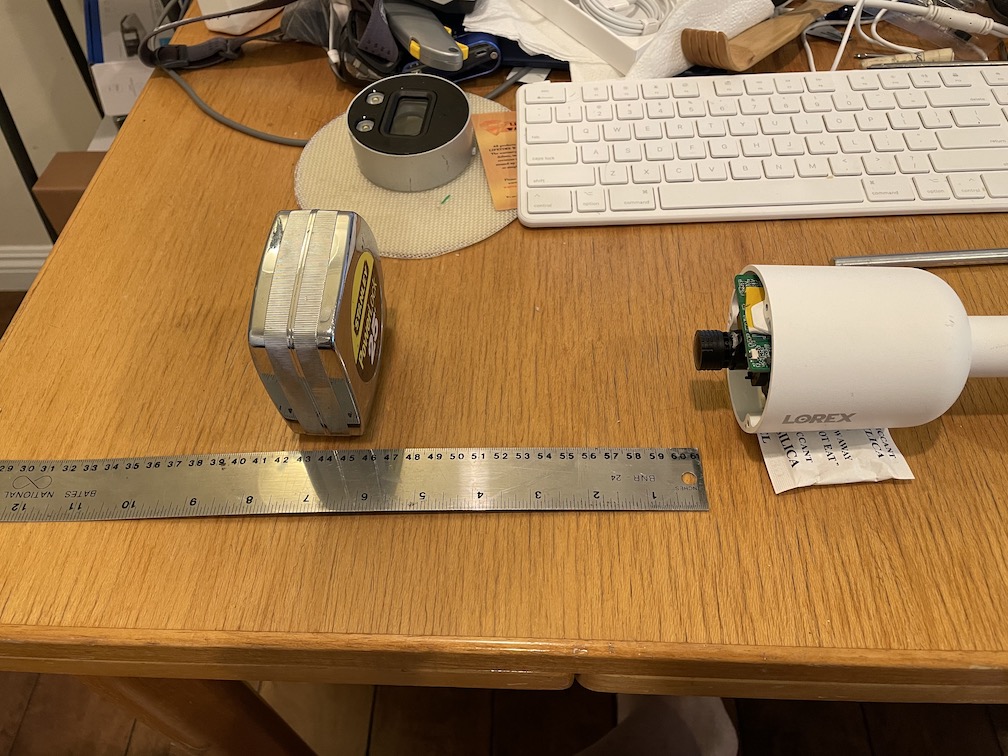
Here's the best I was able to do at 6" from the front of the lens:
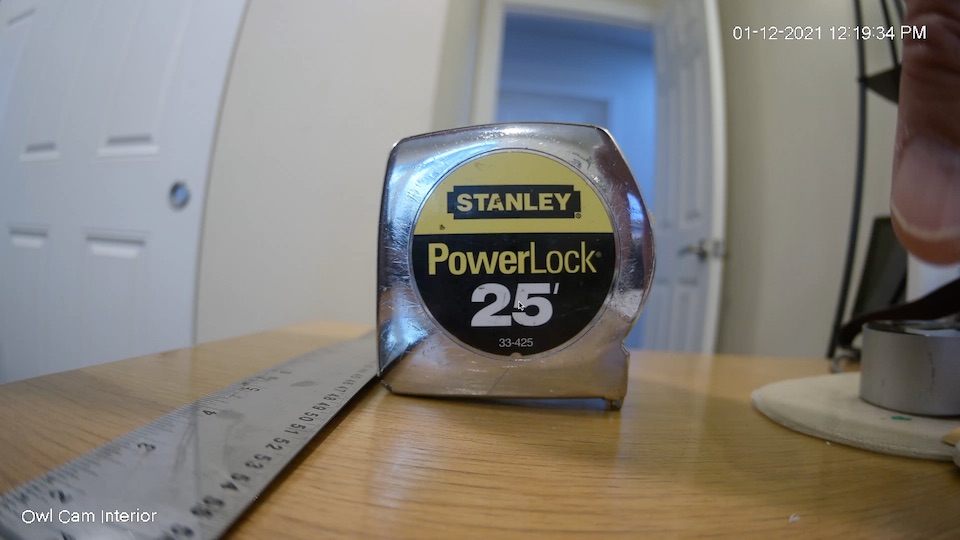
but then it's not great at either 4":
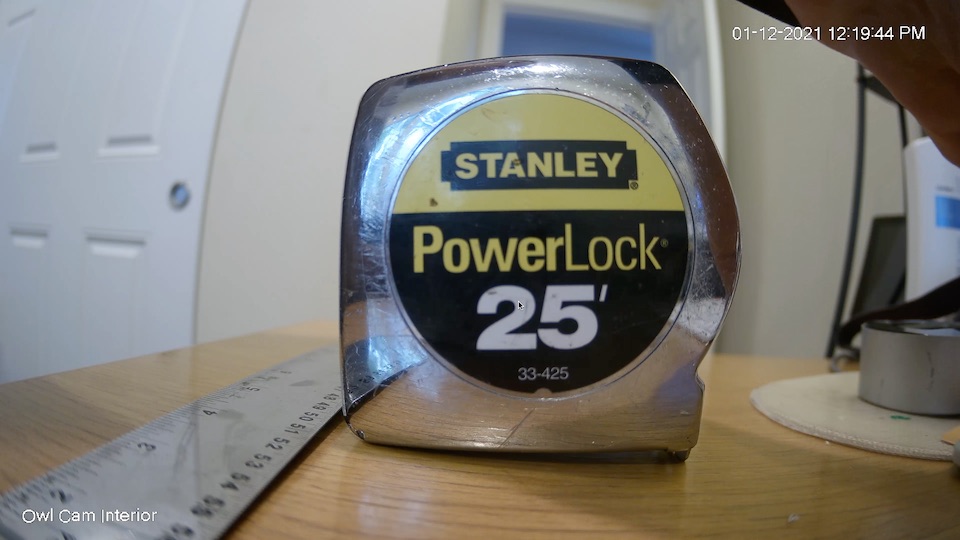
or at 8":
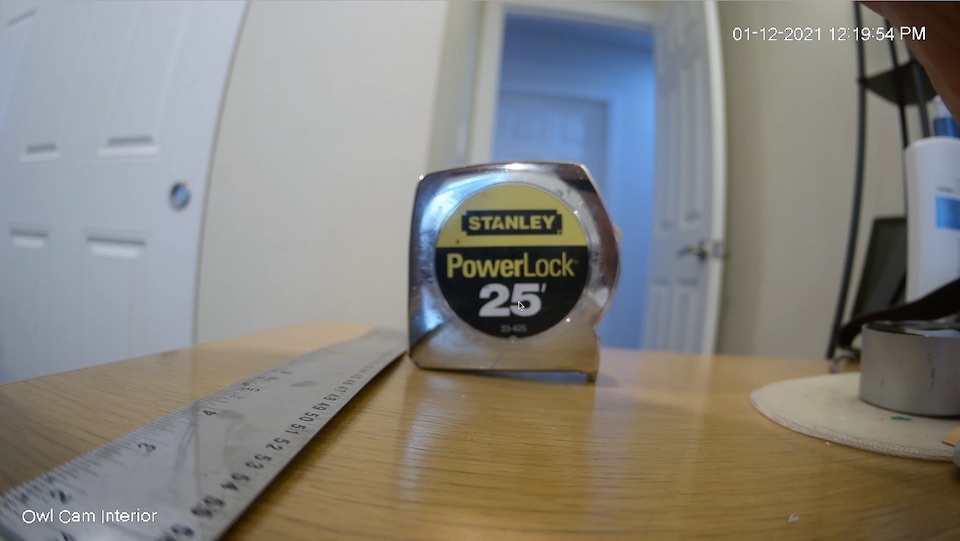
So my DOF is really shallow, and it's a fixed aperture lens, AFAICT.
I suppose I can't really complain, so to speak, because I'm using this in a way that it wasn't designed for.
Are there lenses available with smaller apertures? Is this lens any type of standard form factor?

Here's the best I was able to do at 6" from the front of the lens:

but then it's not great at either 4":

or at 8":

So my DOF is really shallow, and it's a fixed aperture lens, AFAICT.
I suppose I can't really complain, so to speak, because I'm using this in a way that it wasn't designed for.
Are there lenses available with smaller apertures? Is this lens any type of standard form factor?
yes, this is an M16 lens. less common than the m12's used for many smaller sensors, but replacements are available. The default is 2.8mm for a wide FOV, but I have a 6mm in my E1891ab ( tho focused out at 15-30 feet.) Did the previous Reolink focus properly in that range? I have a spare 4mm lens that might work differently (not sure it would be better - may have better DoF despite narrower FoV).
Give me some time to test it in my cam and see if it's any better at DOF in the 4-8" range than the default 2.8mm. I'll report back here when i can...
edit to add links to 4mm and 6mm replacements for Lorex E891AB cam:
US $10.35 |4mm 1/1.8
US $10.35 |6mm 1/1.8
i have not found LONGER lenses than 6mm for this. could be they exist, but may not fit behind the glass in this enclosure...
also had not looked for shorter lenses (less than 2.8mm == stock)
Give me some time to test it in my cam and see if it's any better at DOF in the 4-8" range than the default 2.8mm. I'll report back here when i can...
edit to add links to 4mm and 6mm replacements for Lorex E891AB cam:
US $10.35 |4mm 1/1.8
US $10.35 |6mm 1/1.8
i have not found LONGER lenses than 6mm for this. could be they exist, but may not fit behind the glass in this enclosure...
also had not looked for shorter lenses (less than 2.8mm == stock)
Last edited:
off in the weeds...
there seem to be more lens options available for the smaller m12 mount: m12 fisheye 1/1.8" – Buy m12 fisheye 1/1.8" with free shipping on AliExpress
wondering if there's an adapter available to allow use of a suitable m12 lens in an m16 mount? or replace the mount (and IR cut filter mechanism) along with the lens...
in a dark box, light-gathering ability is not such a big deal, so you could go with a higher f-stop (smaller aperture) to give you deeper DoF.
apologies if i've led you astray here. PM me if you give up on the E1891ab for this purpose and i'll make you an offer to at least recover some of your costs...
there seem to be more lens options available for the smaller m12 mount: m12 fisheye 1/1.8" – Buy m12 fisheye 1/1.8" with free shipping on AliExpress
wondering if there's an adapter available to allow use of a suitable m12 lens in an m16 mount? or replace the mount (and IR cut filter mechanism) along with the lens...
in a dark box, light-gathering ability is not such a big deal, so you could go with a higher f-stop (smaller aperture) to give you deeper DoF.
apologies if i've led you astray here. PM me if you give up on the E1891ab for this purpose and i'll make you an offer to at least recover some of your costs...
No apologies necessary! It's all in the name of science. If I can't use it for the OwlBox I'm sure I'll find another use for it.apologies if i've led you astray here. PM me if you give up on the E1891ab for this purpose and i'll make you an offer to at least recover some of your costs...
I'll look into M16 lenses now.
But I'm a bit of an optical n00b. I understand how aperture affects DOF, but not how focal length affects focus distance or DOF or ????
Last edited:
for these cam lenses at least, a higher number (in mm) means a narrower field of view. (that seems contrary to my experince with telescope eyepieces, but maybe not relevant to this conversation).
as you noted, they are typically fixed aperture/iris (generally as big as possible to get the most light to the sensor).
you have the opposite need now, for smaller aperture to control DoF at very close focus.
I still wonder how your previous cam did in this setup. Was it a Vari-focal perhaps? VF lenses often have a (manual) iris/apperture adjustment, but would not fit in this housing...
as you noted, they are typically fixed aperture/iris (generally as big as possible to get the most light to the sensor).
you have the opposite need now, for smaller aperture to control DoF at very close focus.
I still wonder how your previous cam did in this setup. Was it a Vari-focal perhaps? VF lenses often have a (manual) iris/apperture adjustment, but would not fit in this housing...
for these cam lenses at least, a higher number (in mm) means a narrower field of view. (that seems contrary to my experince with telescope eyepieces, but maybe not relevant to this conversation).
as you noted, they are typically fixed aperture/iris (generally as big as possible to get the most light to the sensor).
you have the opposite need now, for smaller aperture to control DoF at very close focus.
I still wonder how your previous cam did in this setup. Was it a Vari-focal perhaps? VF lenses often have a (manual) iris/apperture adjustment, but would not fit in this housing...
I've had 2 different cameras in the tube. First was a fixed-focus MicroSeven camera that also did not focus very well. I've never had an owl in the box, so I can't really tell what I will or won't be able to see, but I do have a bed of wood chips in there. You can see what that looked like before the camera died:
The box has a partition part-way, which you can see in the model. The model doesn't include the camera baffle, which is mounted on the hinged side door. I would think any owlets would start out on the near side of the partition, but that's just a guess:
The camera in there right now, temporarily, is a Reolink RLC-411, which has motorized zoom and AF:
Swarm Cam at Painted Peacock Manor
This camera is observing a "bait hive" or "swarm trap" in my backyard, hoping to entice a swarm of feral bees to move in.I have another BeeCam rotating amon...
(that stream works only occasionally, because it resets at 7:00 AM and 7:00 PM, and sometimes I'm not around to fix it, and I also can't figure out how to get it to archive right now).
Optically I would have been fine leaving the RLC-411 in there, but the Reolink cameras of that hardware revision have a horrible problem with stuttering in their RTSP feeds in night vision mode. It's only the RTSP feed, because you can see the native (Flash) client on the left side of that video, and it's only in night mode, as the daytime videos look good.
in a dark box, light-gathering ability is not such a big deal, so you could go with a higher f-stop (smaller aperture) to give you deeper DoF.
Have you ever disassembled an M16 lens? Is the aperture accessible? I wonder if I could hack a smaller aperture into this camera somehow.
I googled, and there are no results for "E891AB teardown" or "E891AB disassembly." In fact the first search results say, "Do not disassemble!"
Now google shows a result, and it's this thread. So I've created an infinite loop.


maybe you can find an m16 'closeup ring' to reduce M.O.D ? MOD and close-up rings
edit: tho i dont see how that's different from unscrewing the lens a bit, thus breaking focus. maybe only works for VF lenses...
edit: tho i dont see how that's different from unscrewing the lens a bit, thus breaking focus. maybe only works for VF lenses...
Last edited:
maybe you can find an m16 'closeup ring' to reduce M.O.D ? MOD and close-up rings
edit: tho i dont see how that's different from unscrewing the lens a bit, thus breaking focus. maybe only works for VF lenses...
I'm pretty sure it would have the same optical effect as just unscrewing the lens, as it just moves the lens further from the focal plane of the sensor. Speaking of which, in case anyone is curious, here's what it looks like with the lens removed:
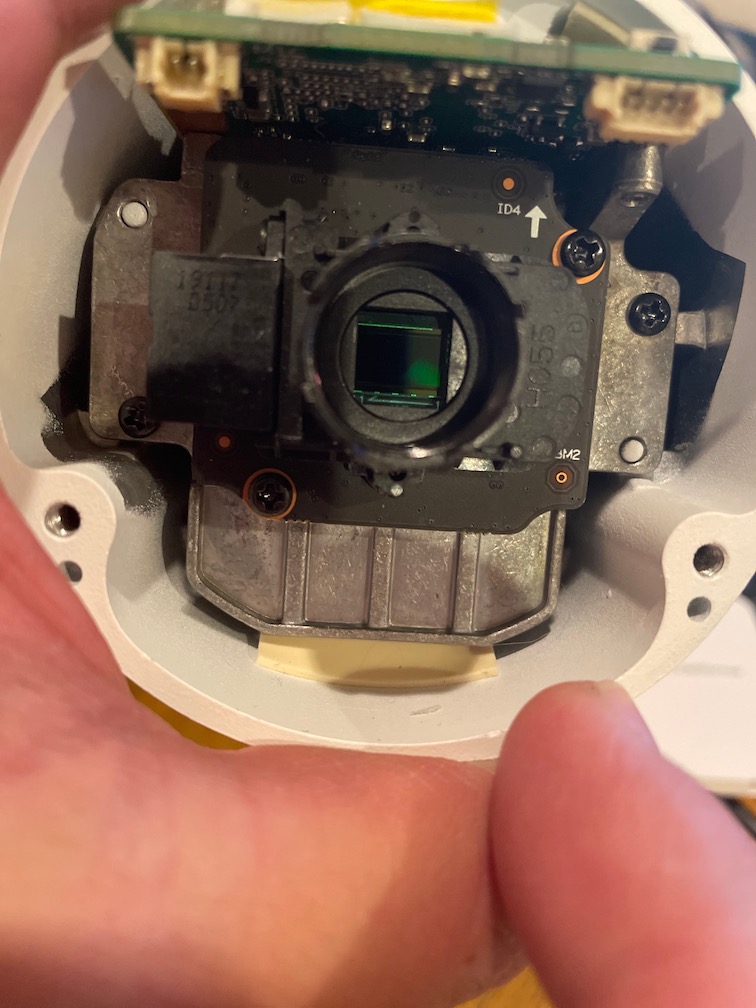
Here's the front of the lens:
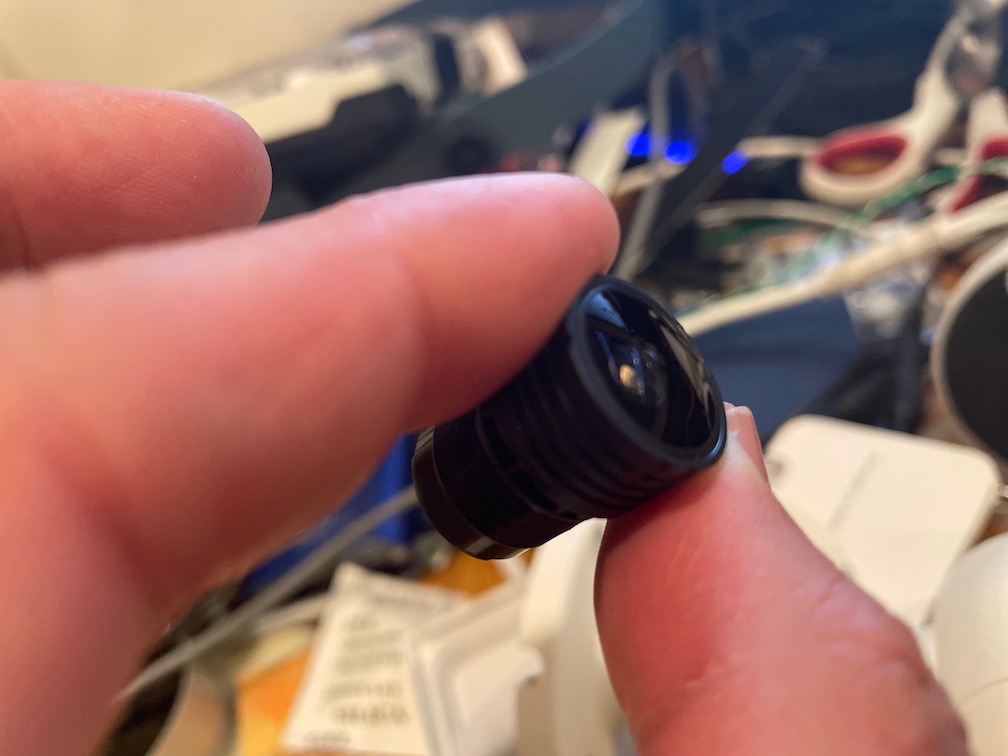
and the back of the lens:
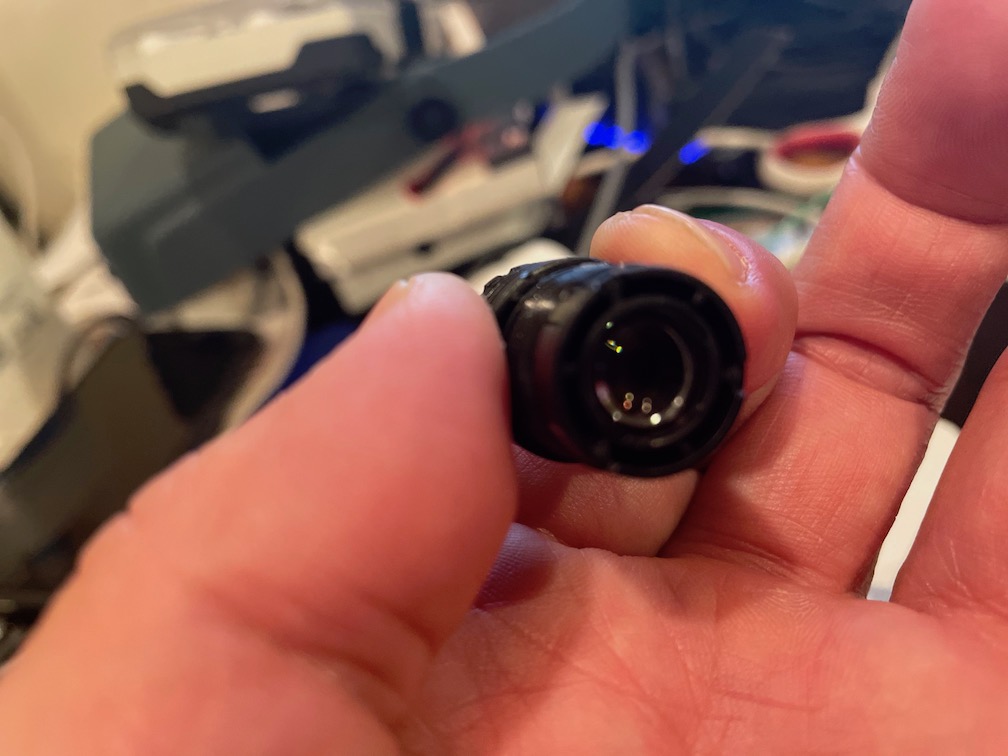
If I unscrew the lens almost all the way, it turns into a microscope, albeit with a non-planar field of focus. I texted this set of emojis to myself on my phone and put it right up against the lens. It was probably a few mm from touching:

You can see individual screen pixels: (click for full-res, ginormous view):
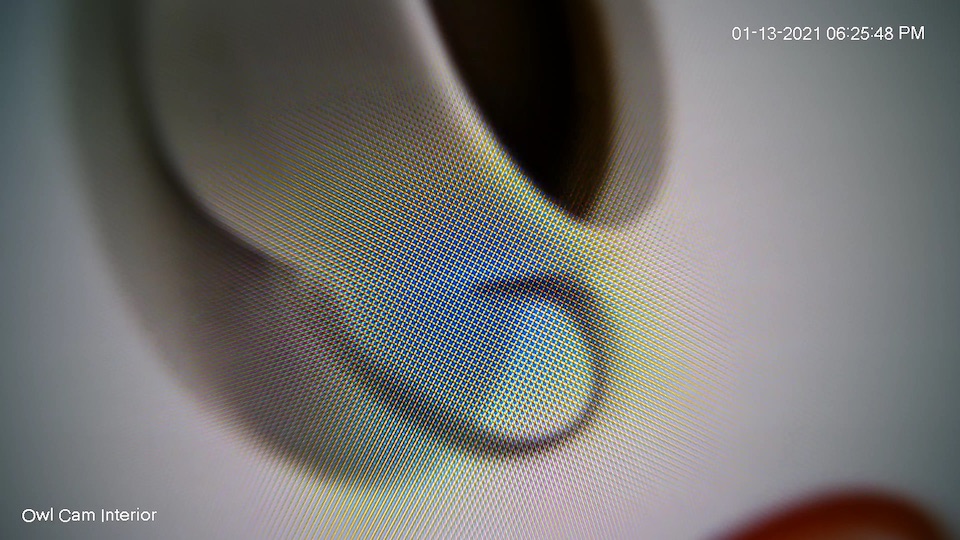
I will put this back up in the tree tomorrow. It has a short DOF, but I don't think I can do any better than this right now.
After playing with the RLC-411's zoom and focus features, maybe that's something I want in my OwlCam. I'm going to put the Lorex E891AB in there tomorrow, just because I don't want to miss an event if it happens, but I'm still on the lookout for the best OwlCam.
I found the Hik DS-2CD2622FWD-IZS which might have the correct form factor. The diameter with the sun-shield is 105mm, and if measure that drawing and scale it, it looks like the diameter of the barrel without the sunshield might be 78.2 mm. My ABS pipe ID is 76.5 mm, so it's a tad too small, but I might be scaling the Hik drawing at the wrong point, because it's not entirely clear where the actual barrel of the camera is in this drawing:
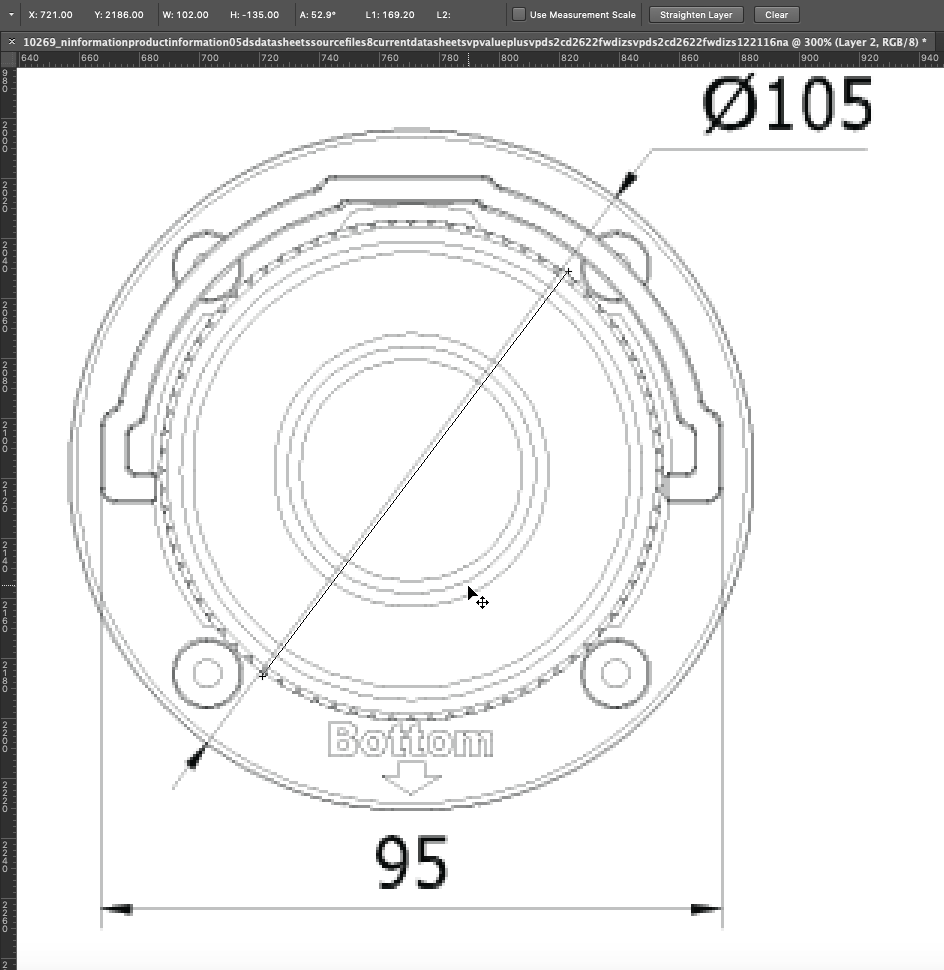
I found the Hik DS-2CD2622FWD-IZS which might have the correct form factor. The diameter with the sun-shield is 105mm, and if measure that drawing and scale it, it looks like the diameter of the barrel without the sunshield might be 78.2 mm. My ABS pipe ID is 76.5 mm, so it's a tad too small, but I might be scaling the Hik drawing at the wrong point, because it's not entirely clear where the actual barrel of the camera is in this drawing:

I have several of that form factor. Calipers say: 77.2 mm at the front, slightly bigger a bit further back, so won't fit...
while you've got the lens holder (and ir-cut mechanism) completely removed, maybe replace with a 12m holder to avail yourself of wider lens availability options? then find an m12 lens at 2.8mm (or less) for a 1/1.8" sensor that has a larger F-value (like 2.2 or 2.5 vs stock f/1.6) for a better DOF at short focus... maybe even a fisheye, but that might cause vignetting behind the Lorex faceplate...
not sure you even need IR-cut cpabaility, as it's always dark in there, isn't it? IR filter needs to be in place for bright daytime imaging, where ambient IR messes with the picture (makes things look pink/purple-ish if no IR filter is built into lens or placed in front of it)
or just try it as-is and see. maybe the DOF won't be an issue...
not sure you even need IR-cut cpabaility, as it's always dark in there, isn't it? IR filter needs to be in place for bright daytime imaging, where ambient IR messes with the picture (makes things look pink/purple-ish if no IR filter is built into lens or placed in front of it)
or just try it as-is and see. maybe the DOF won't be an issue...
I have several of that form factor. Calipers say: 77.2 mm at the front, slightly bigger a bit further back, so won't fit...
Ah, that's too bad. But thanks for the measurement; it saves me a buy-test-and-return cycle.
I will put this back up in the tree tomorrow. It has a short DOF, but I don't think I can do any better than this right now.
It's up!
Live stream is here. I think I have the live stream working properly, so that I don't have to manually fiddle with it every 12 hours, but I'll know more in a day or two.
Of course there's nothing to see yet until a pair of owls moves in.
